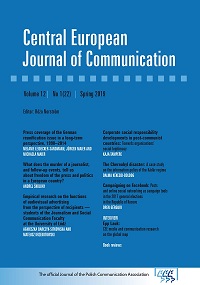The Chernobyl disaster: A case study on the information policy of the Kádár regime
The Chernobyl disaster: A case study on the information policy of the Kádár regime
Author(s): Dalma Kékesdi-BoldogSubject(s): Social Sciences, Media studies, Communication studies
Published by: Wydawnictwo Uniwersytetu Wrocławskiego
Keywords: Chernobyl disaster; Hungary; information policy; partisanship; public opinion; Népszabadság
Summary/Abstract: While the Hungarian Socialist Workers’ Party was on the rhetorical level committed to the Soviet agitation and propaganda model, in practice it increasingly deviated from it during the 1980s. As the press reflected upon the events of the day, propaganda could manifestly be at odds with reality, creating a reality gap, that is, one between what people were told to see and what they actually saw. This paper offers a case study on the communication of the Chernobyl nuclear disaster in Hungary and looks into how it was reflected in party communiques, the party newspaper, and opinion polls. It asks the question of whether ‘accuracy’ or ‘partisanship’ prevailed in the official communication of the disaster.
Journal: Central European Journal of Communication
- Issue Year: 12/2019
- Issue No: 22
- Page Range: 78-91
- Page Count: 14
- Language: English

